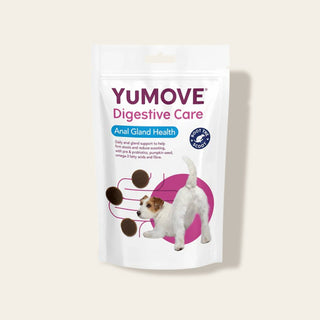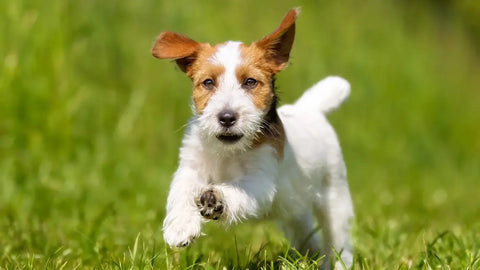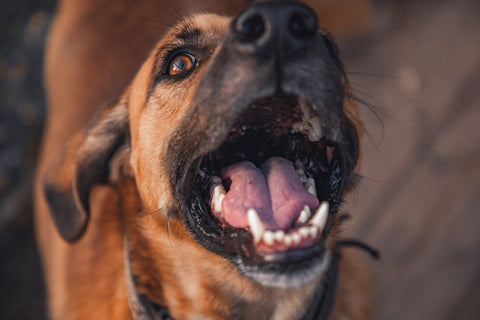
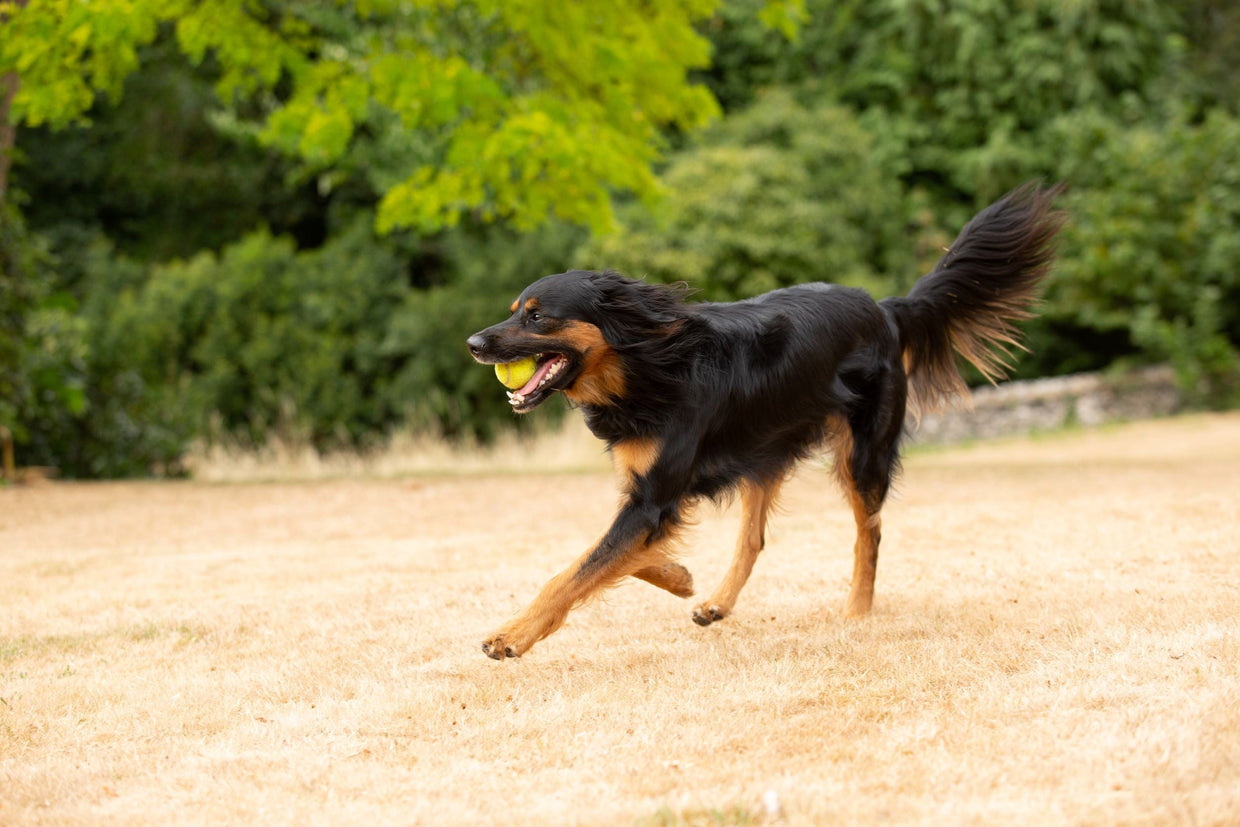
Ask the Vets: All about dog weight
Whether your Labrador is lagging behind on walks, your Terrier has a sensitive tum, or your Maine Coon is moulting, we’re here to share expert advice to help your pet live their most active life!
1. What is the right weight for my dog?
You can find lots of charts online that examine the weight ranges of specific breeds, which can be useful as a reference point. However, relying solely on weight as a measure of whether your dog is healthy can sometimes be misleading.
Your dog’s muscle weighs more than their fat. So sometimes very fit, healthy and active dogs weigh more than an unfit dog that has more body fat. For this reason, vets don’t like to always rely on the weight of your dog as a measure of whether they fall into a ‘healthy’ weight range.
Body condition scores
Vets prefer to assign a body condition score by looking at the body shape of your dog. Owners can also check their dog’s body shape at home. As a guide, a dog with an ideal body weight should have an obvious waist when viewed from above and should have ribs that are easy to feel when running your hands along them. When looking at them from above, an overweight dog will lack a waist and it will be much more difficult to feel the ribs, as they will be covered with fat.

Body condition scores typically involve looking at and feeling the ribs and waist, and charts like the one above can help to assess what you’re seeing and feeling. Take a look at the numbers below to get a better idea of what they mean:
Under ideal, 1–3:
- Your dog’s ribs, spine and pelvis will be prominent – even from a distance. And there will be an obvious lack of muscle and fat.
- The ribs, spine and pelvis are all easily visible. There will be slightly more muscle and fat, but this will be minimal.
- The ribs can be felt easily but may be visible at certain times. The abdomen will still tuck under toward the hind legs.
Ideal, 4 and 5:
- The ribs can be felt easily but will have a minimal layer of fat covering. You can easily spot their waist when viewed from above. A slight abdominal tuck will be evident.
- The ribs can be felt easily without too much fat covering. The waist can be seen when viewed from above. The abdominal tuck is clear when viewed from the side.
Over ideal, 6–9:
- Ribs can be felt, but there is a slight layer of excess fat covering. You can spot their waist when viewed from above, but it isn’t obvious. A slight abdominal tuck.
- It’s slightly more difficult to feel the ribs with a heavier layer of fat. Can spot fatty areas towards the base of the tail. The waist is barely visible.
- Ribs cannot be felt or can only be felt under pressure. Large fatty areas towards the backside. No waist or abdominal tuck is present. In fact, you may see a slight belly under the abdomen.
- Massive fatty areas around the chest, spine, base of tail, limbs and neck. Waist and abdominal tuck absent. Obvious belly.
Given the variety of different shapes and sizes and the vast number of breeds in the dog world, it’s impossible to give a specific ‘right weight’ for any dog. That’s why body condition scoring is so important. It can also be useful to weigh your dog regularly (every six months or so), just to make sure they’re not losing or gaining weight. If you notice any changes, up or down, advice can be sought from your local vet.
2. How much should my dog eat and how many meals a day?
There are many factors to consider when thinking about how much food your dog should eat each day. These include:
- The weight of your dog. A small dog will require a much lower volume of food compared to a giant breed.
- The type of food provided. Generally, you need to feed your dog more on a wet food diet compared to a dry food one.
- The breed of dog, activity levels and age. A younger dog with high levels of activity will require more food per day compared to an older dog, which leads to a more sedentary lifestyle.
Every manufactured food will have a feeding guide (usually found on the packaging), which recommends the volume or weight of food required each day. Plus, it’s important to use food designed for the age of your dog to ensure they’re getting the correct nutrients for their life stage.
When it comes to the number of meals per day, you should also consider factors such as age. For instance:
- Young puppies need small and frequent meals to meet their developmental needs
- Adult dogs can usually be fed less frequently than puppies, often 1 to 2 times daily
- Older dogs sometimes require small and frequent meals. Just like in humans, their eating habits can change with age.
If you’re concerned that your dog is not getting the correct volume of food, we recommend speaking to your vet or one of the nurses at your local practice. They will be able to recommend the correct volume of food for you based on your dog’s current diet.
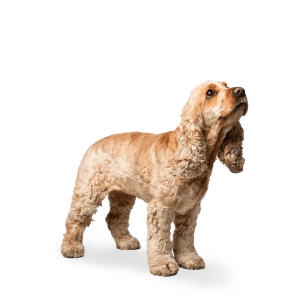
3. How do I safely reduce my dog’s weight?
If you think your pet is overweight, we recommend arranging an appointment at your local vet practice. Many clinics offer weight appointments run by veterinary nurses. They can weigh your dog and recommend what weight to aim for.
During this appointment, they will also discuss how much food you should provide on a daily basis to achieve your dog’s target weight. They may even measure your dog’s neck circumference, chest and belly and then arrange return visits to track your dog’s progress – similar to human diet clubs.
Our top weight loss tips
Some things that are likely to help your dog safely lose weight include:
- Cutting out treats which are in addition to your dog’s diet. Where necessary, you should consider healthy alternatives such as carrots.
- Accurately measuring out your dog’s daily allowance of food. If your dog is on a weight reduction diet, the aim will be to lose between 1% and 2% of their body weight every week – this means the weight loss will be steady and more likely to be maintained in the future.
- Don’t cut down their food drastically. If you significantly reduce their food down each day, your dog will be hungry and more likely to scavenge or beg for food.
- Try a special diet. If your dog is very overweight or constantly hungry and looking for food, there are special diets which can help. These are higher in protein and fibre compared to standard dog food. They will make your dog feel fuller for longer, which aids with their overall weight loss. High protein and fibre diets are recommended to be used alongside a tailored weight loss programme for your dog. Read our guide to the benefits of fibre for dogs.
4. How can I help my dog who is losing too much weight?
If your dog appears to be losing weight and you haven’t changed their diet or exercise regime, then we would recommend seeking the advice of your vet. It may be that your dog just needs to be on a more calorie-dense diet, but weight loss can be an indicator of other things, such as poor dental health, parasites or tummy concerns. Any underlying concerns need to be ruled out first.
But don’t worry, many conditions causing weight loss are treatable. Your vet will first perform a full clinical examination of your pet, and then may carry out some further tests – such as blood tests, X-rays and ultrasounds. Once the underlying concern has been identified, they can then treat your pet and get them back on the road a healthy weight and an active life.
However, if your dog is on a weight-loss diet and you’re worried about them losing too much weight, we would also recommend seeking the advice of your vet. In your appointment, a qualified veterinary nurse will advise on the amount of food that your dog requires to maintain their healthy weight once attained.
5. What are some healthy treats for your dog?

There are many treats available on the market, but some can be high in fat and sugar. Your dog’s normal diet should always be reduced when treats are being fed, according to the number of calories in each treat. However, we know that treats can be really useful for training purposes. And dogs, like all of us, take great pleasure in being given a treat. So, it’s a good idea to have some healthy treat alternatives that you can give to your dog whilst still looking after their weight.
Healthy alternatives include fruit and vegetables. Specifically, ones that are high in nutrients, low in calories and can be given in moderation. These include carrots, celery, cucumbers, and cored and deseeded apples and pears. On the other hand, it’s still important to maintain portion control with healthy treats. Treats should comprise no more than 10% of your dog’s complete and balanced diet.
Of course, not every dog likes these healthy alternatives. Another option is to use your dog’s existing diet by saving a small part of their daily meal to split into smaller portions. This can then be used as treats.
It’s also important to remember what not to give your dog – some food that’s safe for us may be toxic to dogs. These include grapes, raisins and anything that includes onion, garlic, shallots or chives. It’s also very important to avoid any products which contain Xylitol – a sweetener that’s highly toxic to dogs.
This goes without saying, but if you’re concerned there’s something seriously wrong with your dog, it’s important to get in touch with your vet as soon as possible so they can examine your pet.
Check out our other digestive supplements for dogs to find out more ways you can support your pet!


